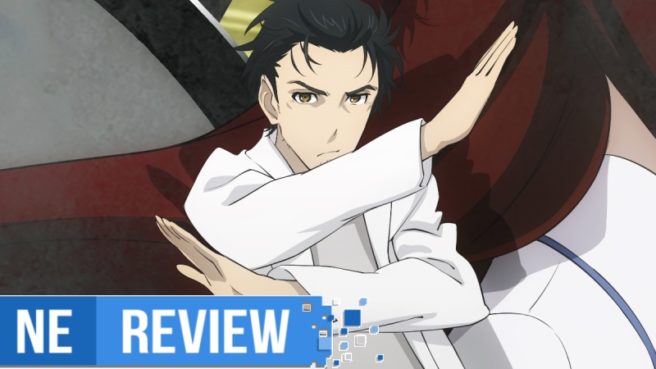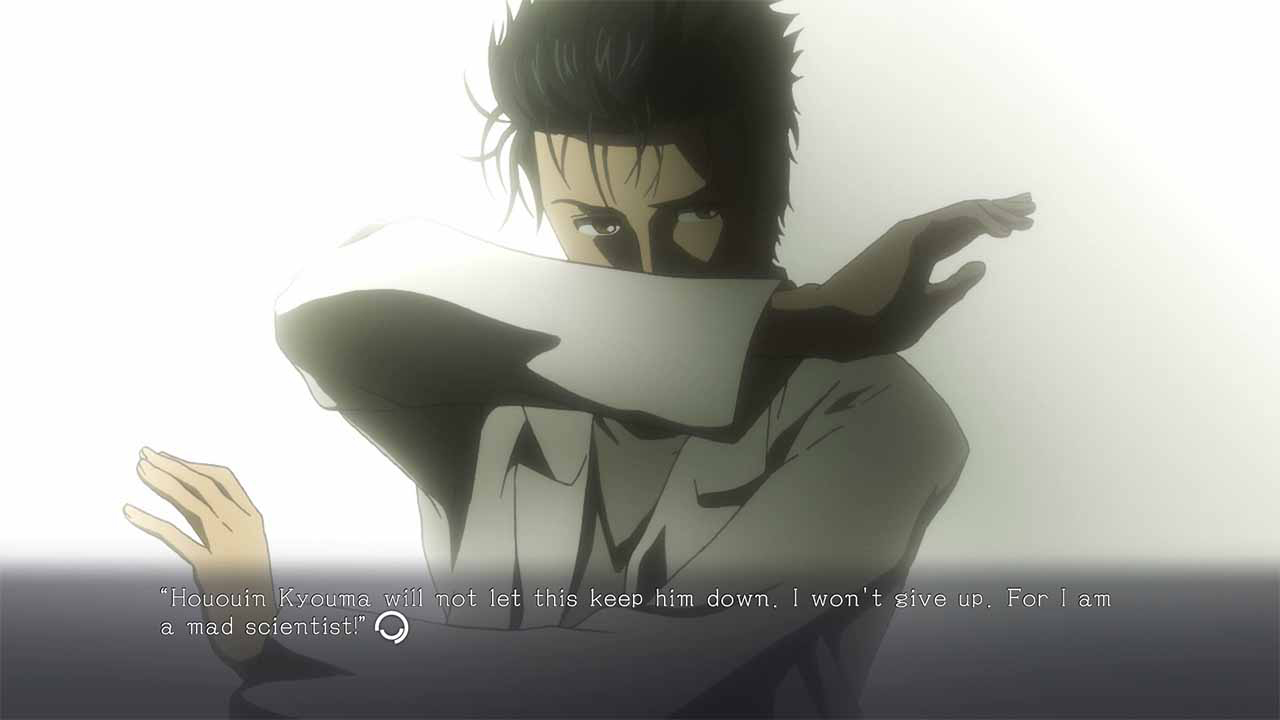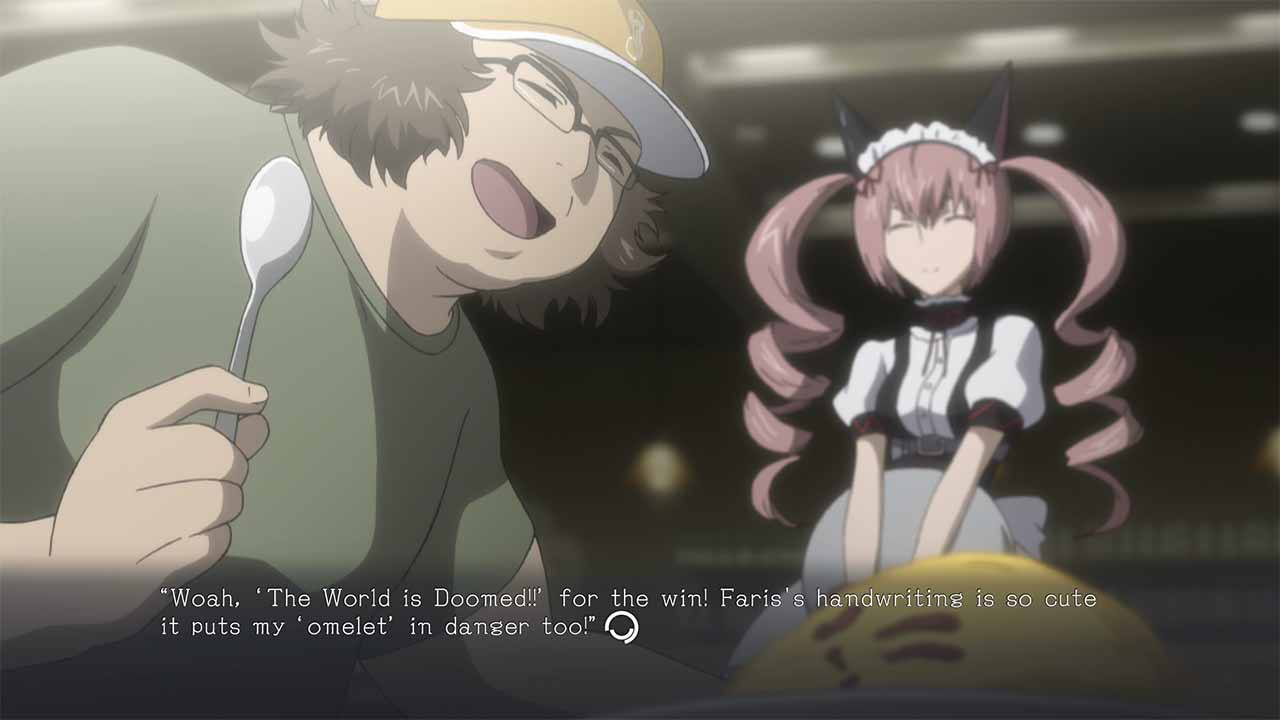[Review] Steins;Gate Elite
System: Switch
Release date: February 19, 2019
Developer: 5pb.
Publisher: Spike Chunsoft
In 2009 we were introduced to a work of science fiction that, to this day, holds great value and precedence in its prowess of storytelling and continues to be revered as one of the greatest visual novels ever produced: Steins;Gate. This was part of Chiyomaru’s Shikura’s Science Adventure series that was preceded by Chaos;Head. The Science Adventure series from 5pb. and Nitroplus spans quite a few games that are still developed to this day and all bring their own flare, charm, and narrative, with sequels more so being spiritual successors rather than follow-ups. With Switch’s first installment, Steins;Gate Elite, we have a beautiful and faithful rework of sorts that now has the chance to breathe new life again and be introduced to a whole new audience. It was something I thought wouldn’t entirely work at first since it uses most of the anime’s cutscenes to retell its original story (with a few exceptions), but what ended up ultimately happening was a rekindling of love for one of my favorite games and some of my favorite characters in the medium.
Steins;Gate Elite finds itself revisiting its take on time travel with the Phonewave (name subject to change) after self-proclaimed Mad Scientist Okabe Rintatro, or Hououin Kyouma, has his interest peaked after a presentation on the subject and quantum theory that frustrates him to no end. It’s not long after he walks out – or is forced out – thanks to an altercation where he hears a massive noise and then a scream. The two incidents are unrelated in position space, but it’s the inconsistencies of the time and the paradox around it that leaves him confused as to why his story isn’t adding up to anyone else’s. Once Okabe goes back to his lab – a small apartment that’s rented on top of an old tube TV shop – he’ll rendezvous with his other laboratory members, or lab mems, and explain all that happened and what he saw, and while they understand some of it, there are parts of his story that, to them, simply never happened – including a certain email that makes everything spiral out of control.
In addition to its captivating story that also has many slice-of-life elements that make it relatable with further help by its incredible cast of characters, Steins;Gate stood out in part due to its unique art direction that almost had this cosmic, watercolor-esque approach to it. Much like how Danganronpa utilizes its colors and eyes, Steins;Gate was unlike anything else. My biggest worry about this sudden shift to using sequences from the anime was that it’d look like just that: an anime. However, even the anime does well to mostly stay true in structure and form to the world of Steins;Gate, but of course having to make some sacrifices along the way, like ridding the color-palette of the visual novel. The presentation wasn’t as abstract, if you will, but still very much had that vibe of Steins;Gate and the Science Adventure series. Those that have seen the anime pretty much know what to expect, but I was rather pleased with how well the animation synced up with the dialogue and the smart use of looping certain segments so that, even if you remained idle on a certain sentence, the scene never came to an abrupt stop. It keeps the visuals very much in motion, and even during the parts where certain frames are static, angles are cleverly positioned so it never feels like someone hit pause on a remote. Of course, the use of audio outside of the dialogue – like ambiance, music, etc. – further aid in the immersion and never once feel as if it’s chopped up. It is in one continuous motion.
Steins;Gate is about 95% pure visual novel, and I say that because, while you won’t be actively pressing many buttons to influence anything, you do on occasion interact with your phone. It’s here where story elements – based off of the texts that you decide to reply or ignore – begin to diverge into various routes and timelines. There are multiple different endings, with each character having their own, alongside a few bad routes, good routes, and of course – as is tradition with these types of games – a true ending. The phone in Steins;Gate Elite, much like the rest of the game, has been overhauled to better fit the direction of Elite with a change in how it’s used, looks, and works. The UI is entirely different, and while a lot of these changes work for what it tries to accomplish, for some odd reason they don’t feel as fluid to me as they did before. I swear I’ve pressed every button, but it doesn’t seem that you ever have the chance to open up your phone at any given moment to look back at other texts or attempt random responses, and instead is only used whenever it needs to be. It was minute, but before you could change your wallpaper and ringtone among other things you’d normally find in your settings of a phone to make it more “you”. This customization, while it has absolutely no influence on story or gameplay, was a simple way to increase immersion and make you feel as if you, the player, were the Mad Scientist Okab–*ahem*, Hououin Kyouma.
As one would expect, because the anime only ever went one direction during the course of one season, there’s a lot of content, dialogue, imagery, and narrative that was untouched. Due to this, not only were the animations from the anime used, but there’s plenty of new animation done specifically for Steins;Gate Elite to compensate for those moments that simply did not exist before. This excited me immensely, as many moments that were unexplored from the anime had me thinking about “what if” scenarios since Steins;Gate could go so many ways with its narrative and be equally as esoteric and profound during the course of its run.
I was a little worried at first because once Steins;Gate Elite had been revealed I was actually indifferent towards it despite my undying love for the Science Adventure series and 5pb. in general. The distinct and beautiful art style was gone, and the animation, while great, left so much untouched that it had me wondering if it was just going to be a linear experience to keep things a little more brief and accessible to those that maybe don’t fancy visual novels that much and, by doing this, trying to reach a larger audience. Steins;Gate is not, under any circumstances, something that should ever be dumbed-down, and the anime did its best to keep things as straight forward as possible, but anyone who’s played Steins;Gate since 2009 knows that every sequence – good, bad, and everything in between – is worth experiencing and delving into. The sheer emotion, the impeccable writing, the ineffable art, and the masterful voice acting make Steins;Gate a class act in the medium.
This makes the replay value of Steins;Gate high. Usually with most visual novels, once you’re done with a route, regardless of ending even if it’s not the true ending, it’s never really imperative to go back and try again. It makes for unique experiences when talking about certain novels like “Oh, what happened in your playthrough?”, but in a game like Steins;Gate every little detail counts and paints an overall larger picture that, once fully laid out on its stunning canvas, leaves you thinking for days and weeks. It’s a conversation starter and one that can go into more intellectual ideologies and theories.
A great thing that Steins;Gate does also that some visual novels suffer from is that the “Skip” function only skips the content you’ve read and gone through, and whenever there’s a time where your phone is being utilized, previous decisions are highlighted to note previous decisions. This makes things easier when trying to find new routes, though it’s the ones you have to skip that become questionable as there’s no indication of that, so you’ll have to simply do your best to deduce whether some texts are worth responding to.
Do keep in mind, unlike regular Steins;Gate, that Steins;Gate Elite on the Switch does not have touchscreen support. It’s not the end of the world, but I do find myself using touchscreens frequently with visual novels to either progress or navigate the screen, so this was a slight bummer as it would have been nice to see on Switch’s screen, especially while scrolling through old logs, sites, or viewing unlocked terminology, and there is a lot of terminology. Most of it is based off of real science and explains certain equations and theories in-depth but brief, but there are others that are made to be slightly altered as to not make it seem like Steins;Gate takes place in our real world, though it’s obvious what some of the comparisons are, and a lot of the time it’s rather comedic. Steins;Gate may present itself like a serious story, but everything so naturally flows together when it includes humor and other stuff that it instead feels like a hangout session with friends on a typical day in our lives, but with a nerdy group of science junkies that happen to have found something groundbreaking.
Steins;Gate Elite does such a fantastic job at bringing 5pb.’s seminal work to a more modern era a decade later, and with the ability to use the Switch in handheld mode (my preferred way to play visual novels), this makes it a must for Switch owners. Even to those that may not be big on visual novels but love anime, I would highly recommend checking Steins;Gate Elite out whether you’ve watched the show or not. Sure, for those that haven’t, they could just watch the anime and call it a day, but like I’ve said there’s a lot there that goes untouched, and chances are you’ll find yourself so invested that you’ll want to squeeze out as much as you can from this vibrant and memorable, yet semi-bleak tale of string theory, quantum mechanics, and the space-time continuum. Auto-mode is available as well, so now with the graphics being used as the anime, you could always dock your Switch and let it go as you watch and read along, occasionally picking up your Joy-Con to select certain responses and make decisions. Steins;Gate Elite reminded me why I’m so enthralled with the Science Adventure series, and it makes me hope that the other games in the series get the same treatment at one point or another. Steins;Gate has made me laugh, it’s made me cry, it’s made me smile, it’s made me angry, it’s made me gasp, and it’s even made me lose sleep, and Elite did all of those things again years later with the addition of something I’d wanted to do for a while: Rekindle my love for Steins;Gate.
The Verdict
Steins;Gate will forever remain, to me, one of the most influential and profound visual novels of all time. Everything it does from its storytelling to its character development and beyond sets such a strong foundation for what makes a narrative like this so great and memorable, and further shows that the success of Steins;Gate or any visual novel in general doesn’t need to rely on fan service to get its name out there through fan art. Steins;Gate goes beyond the norm by implementing real science theories, algorithms, and nomenclature that keeps players invested and captivated by the possibilities of what can happen next, both in the game and with technology sparking imagination for the real world. These sorts of games show that you can take the risk of having a deep-rooted narrative without feeling like it won’t be accessible. Granted, this all comes down to the writing itself and making sure plot-holes are minimal while adequately explaining any scenario that may be deemed obscure. Of course, localization plays a big part in making sure these visual novels are translated in a way that’s most faithful and cohesive. At the end of the day, however, whether you’ve played Steins;Gate before or watched the anime or films, or even have the slightest interest in it, this is one that should be a staple in every VN-enthusiast’s library without excuse. Steins;Gate Elite is a wonderfully done rework using the anime’s beautiful rendition to further bring its scenarios to life, and it’s made me fall in love with the original story all over again.
El Psy Kongroo.
Steins;Gate Elite review copy provided by Spike Chunsoft for the purposes of this review.





